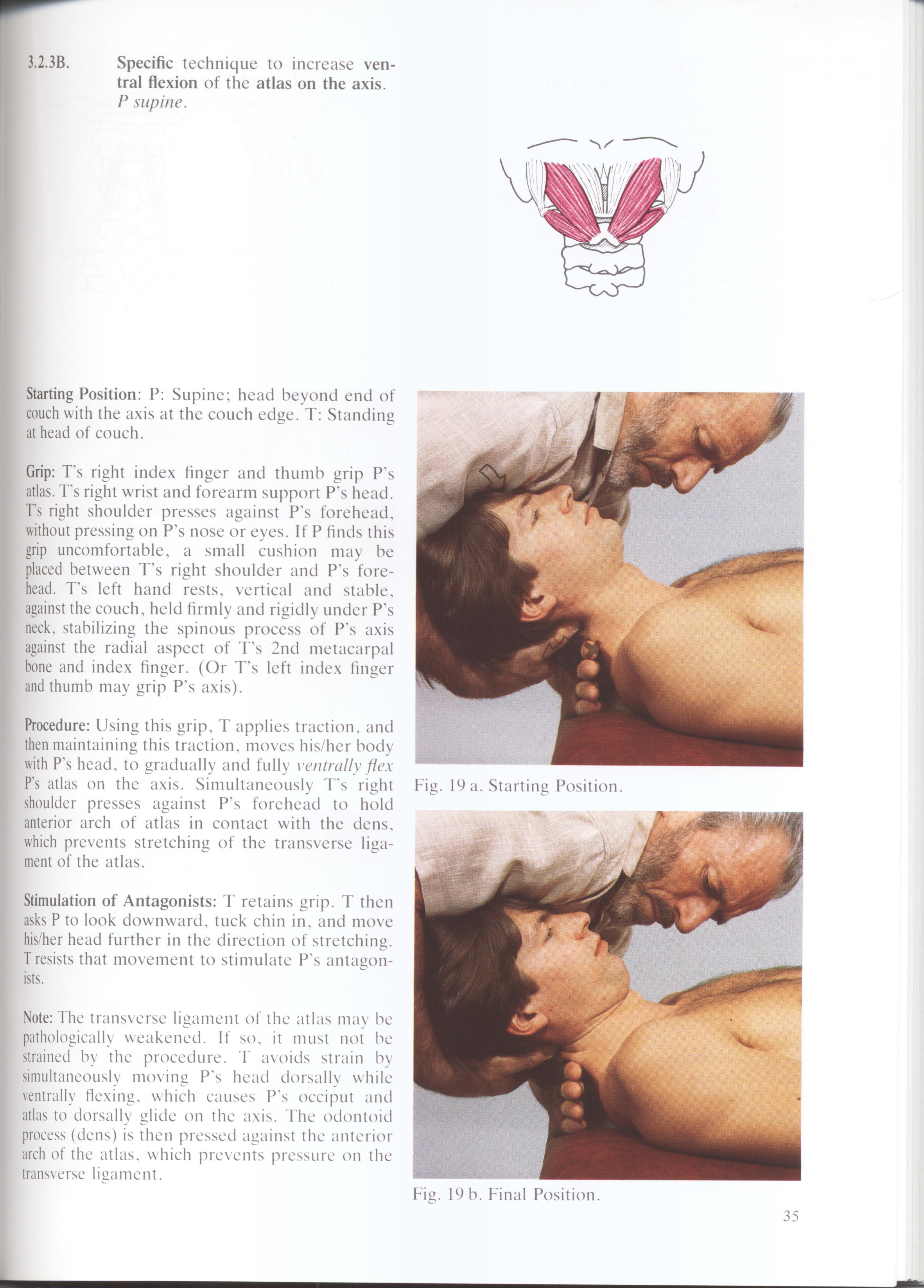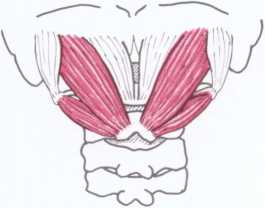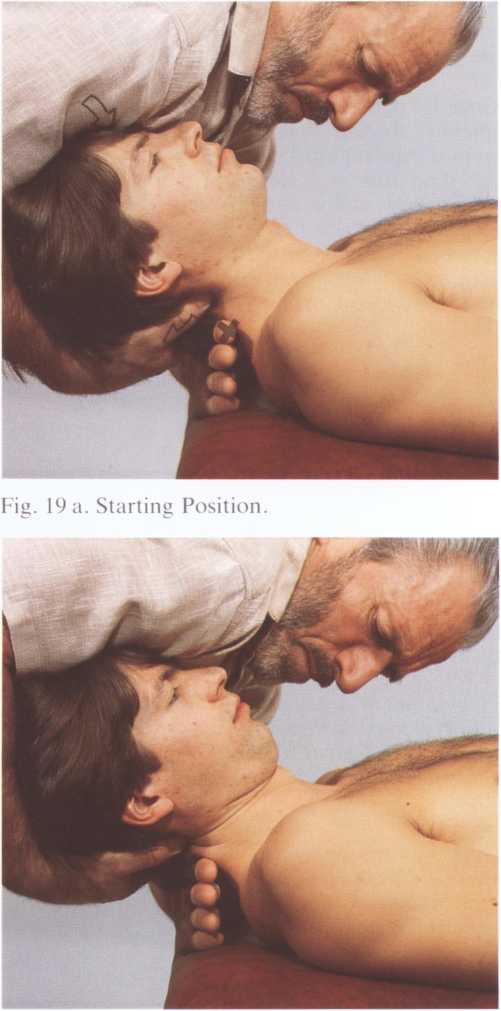35 (522)

3.2.3B.
Specific techniąue to increase ven-tral flexion of the atlas on the axis. P supine.

Starting Position: P: Supine; head beyond end of couch with the axis at the couch edge. T: Standing at head of couch.
Grip: T’s right index finger and thumb grip P’s atlas. T’s right wrist and forearm support P’s head. Ts right shoulder presses against P’s forehead, without pressing on P’s nose or eyes. If P finds this grip uncomfortable, a smali cushion may be placed between Ts right shoulder and P’s forehead. Ts left hand rests, vertical and stable, against the couch, held firmly and rigidly under P's neck, stabilizing the spinous process of P’s axis against the radial aspect of Ts 2nd metacarpal bonę and index finger. (Or T’s left index finger and thumb may grip P’s axis).
Procedurę: Using this grip, T applies traction, and then maintaining this traction, moves his/her body with P’s head, to gradually and fully ventrally flex P's atlas on the axis. Simultaneously T’s right shoulder presses against P’s forehead to hołd anterior arch of atlas in contact with the dens, which prevents stretching of the transverse liga-ment of the atlas.
Stimulation of Antagonists: T retains grip. T then asks P to look downward, tuck chin in, and move his/her head further in the direction of stretching. T resists that movement to stimulate P’s antagonists.
Notę: The transverse ligament of the atlas may be pathologically weakened. If so, it must not be strained by the procedurę. T avoids strain by simultaneously moving P's head dorsally while ventrally flexing, which causes P’s occiput and atlas to dorsally glide on the axis. The odontoid process (dens) is then pressed against the anterior arch of the atlas, which prevents pressure on the transverse ligament.

Fig. 19 b. Finał Position.
35
Wyszukiwarka
Podobne podstrony:
31 (637) 3.2.2A. Specific technique to increase ven-tral flexion of the occiput on the atlas. P sitt
32 (619) 3.2.2B. Specific techniąue to increase ven-tral flexion of the occiput on the atlas. P sitt
33 (623) 3.2.2C. Specific techniąue to increase ven-tral flexion of the occiput on the atlas. P supi
34 (544) 3.2.3A. Specific technique to increase ven-tral flexion of the atlas on the axis. P sitting
88 (153) 4.2.1. Specific technique to increase ven-tral glide of the mandible (j)rotru-sion). Inabil
99 (122) 5.2.2A. Specific techniąue to increase ven-tral flexion of Tl on T2. P supine. Starting Pos
36 (519) 3.2.4A. Specific technique to increase ven-tral flexion of C2 on C3. P sitting. Starting Po
37 (498) 3.2.4B. Specific techniąue to increase ven-tral flexion of C2 on C3. P supine. ► Starting P
42 (439) 3.3.2B. Specific technique to increase ven-tral flexion with rotation and lateral flexion t
43 (434) 3.3.2C. Specific technique to increase ven-tral flexion with rotation and Iateral flexion t
41 (472) 3.3.2A. Specific techniąue to increase ven-tral flexion with rotation and lateral flexion t
90 (158) 4.2.3A. Specific technique to increase ven-tral and caudal movement of the mandible. Slight
50 (351) 3.5.3B. Specific techniąue to increase dorsal flexion of the atlas on the axis. P sitting.
51 (336) 3.5.3C. Specific techniąue to increase dorsal flexion of the atlas on the axis. P supine. S
58 (289) 3.6.1A. Non-specific techniąue to increase dorsal flexion with rotation and later-al flexio
60 (278) 3.6.2A. Specific technique to increase dorsal flexion with rotation and lateral flex-ion to
61 (265) 3.6.2B. Specific techniąue to increase dorsal flexion with rotation and lateral flex-ion to
62 (263) 3.6.2C. Specific techniąue to increase dorsal flexion with rotation and lateral flex-ion to
63 (253) 3.6.2D. Specific technique to increase dorsal flexion with rotation and lateral flex-ion to
więcej podobnych podstron